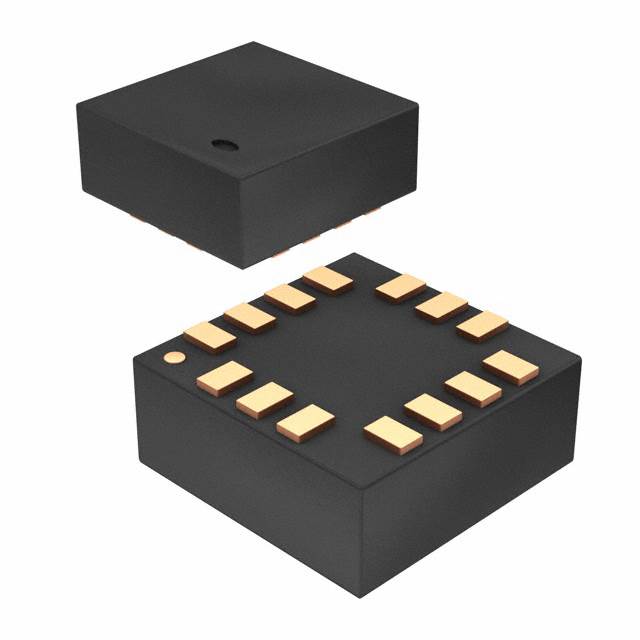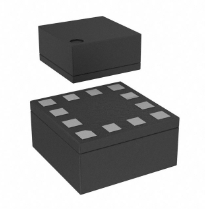- Online chat

LIS2DHTR
1. General Overview
The LIS2DHTR is a high - performance, ultra - low - power, three - axis linear accelerometer produced by STMicroelectronics. Accelerometers are sensors that measure acceleration forces, including static forces like gravity and dynamic forces caused by motion.
2. Key Features
2.1 Ultra - Low - Power Consumption
One of the most prominent features of the LIS2DHTR is its ultra - low - power operation. It is designed to consume minimal energy, which is crucial for battery - powered devices such as wearable fitness trackers, smartwatches, and wireless sensor nodes. The low power consumption helps to extend the battery life of these devices, reducing the frequency of recharging and enhancing the overall user experience.
2.2 High Resolution
The accelerometer offers high - resolution measurement capabilities. It can detect very small changes in acceleration, providing accurate data for applications that require precise motion sensing. This high resolution is beneficial in applications like motion - based gaming, virtual reality (VR) controllers, and industrial equipment monitoring, where accurate motion data is essential for proper functioning.
2.3 Selectable Full - Scale Range
The LIS2DHTR allows users to select different full - scale ranges for acceleration measurement. For example, it can be configured to measure accelerations in ranges such as ±2g, ±4g, ±8g, or ±16g. This flexibility enables the sensor to be used in a wide variety of applications, from detecting gentle movements in consumer electronics to measuring high - impact forces in industrial or automotive applications.
2.4 Embedded Functions
It comes with several embedded functions that enhance its usability and performance. These functions may include a built - in FIFO (First - In - First - Out) buffer, which can store a certain amount of acceleration data. This is useful in applications where data needs to be captured over a period of time or when the main processing unit cannot read the data in real - time. Additionally, it may have embedded interrupt functions that can trigger an event when a specific acceleration condition is met, such as a sudden movement or a change in orientation.
2.5 Small Form Factor
The LIS2DHTR is packaged in a small form factor. The compact size makes it suitable for integration into small - sized devices where space is limited. It can be easily incorporated into the design of modern consumer electronics, medical devices, and other miniaturized products.
3. Applications
3.1 Consumer Electronics
In consumer electronics, the LIS2DHTR is widely used in smartphones, tablets, and wearables. In smartphones, it can be used for features such as screen rotation, motion - based gaming, and step counting in fitness tracking applications. In wearables, it enables functions like activity monitoring, sleep tracking, and gesture recognition.
3.2 Industrial Monitoring
In industrial settings, the accelerometer can be used for monitoring the vibration and movement of machinery and equipment. By measuring the acceleration of rotating parts or vibrating structures, it can detect potential faults or abnormalities in the equipment early, allowing for preventive maintenance and reducing downtime.
3.3 Automotive Applications
In the automotive industry, the LIS2DHTR can be used for applications such as vehicle stability control, airbag deployment systems, and tilt sensing in navigation systems. The high - resolution and fast response time of the accelerometer make it suitable for these safety - critical applications.
3.4 Medical Devices
In medical devices, the accelerometer can be used for monitoring patient movement, such as in fall detection systems for the elderly or in rehabilitation devices to track the progress of a patient's recovery. The low - power and small - size characteristics make it suitable for use in portable and wearable medical devices.
4. Electrical Specifications
4.1 Supply Voltage Range
The LIS2DHTR typically operates within a certain supply voltage range, for example, from 1.71V to 3.6V. This wide supply voltage range allows it to be powered by various types of power sources, including single - cell batteries or regulated power supplies.
4.2 Output Data Rate
The output data rate of the accelerometer can be configured. It can provide acceleration data at different frequencies, depending on the application requirements. Higher output data rates are suitable for applications that require real - time monitoring of fast - changing motion, while lower data rates can be used to conserve power in applications where less frequent data updates are sufficient.
4.3 Noise Level
The noise level of the accelerometer is an important specification. A low noise level ensures that the measured acceleration data is accurate and reliable. The LIS2DHTR is designed to have a relatively low noise level, which contributes to its high - resolution performance.
In summary, the LIS2DHTR is a versatile and high - performance three - axis accelerometer that offers ultra - low - power operation, high resolution, and a range of useful features, making it suitable for a wide variety of applications in different industries.





